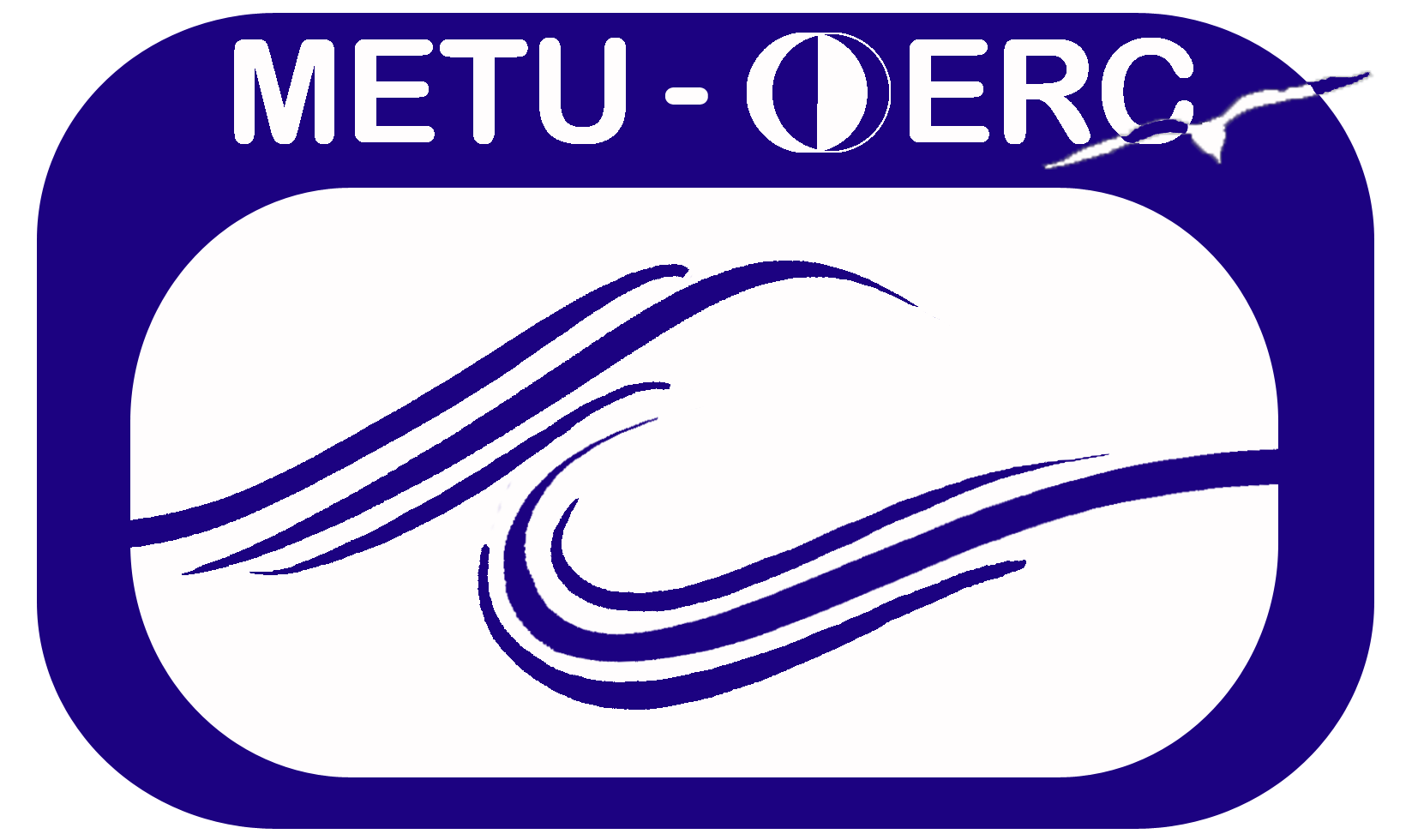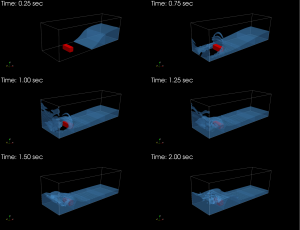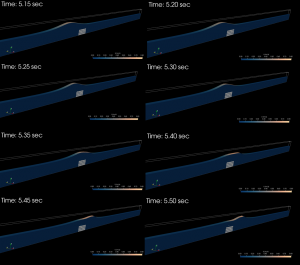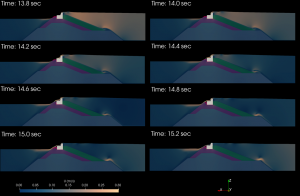ibmPorFoam
ibmPorFoam is a numerical flow solver for wave-porous structure interaction problems based on the open-source computational fluid dynamics library OpenFOAM®, developed by researchers from Turkey, USA, Denmark and Japan (Guler et al., 2018; Guler et al., 2019). ibmPorFoam solves Volume-Averaged Reynolds-Averaged Navier-Stokes Equations, and it uses the immersed boundary method to impose the solid boundaries in the computational domain. Turbulence modeling can be handled using two equation models in the framework of Reynolds Averaged Navier-Stokes Equations. The model is capable of wave generation and active wave absorbing based on the boundary conditions given by ESI distribution of OpenFOAM®. The free surface is captured using the Volume of Fluid method employed by either using Multidimensional Universal Limiter with Explicit Solution (MULES) or isoAdvector algorithms. For the present version of ibmPorFoam, isoAdvector algorithm is modified and implemented to account for porous media flow in combination with the immersed boundary method.
ibmPorFoam is validated against several experimental datasets using both MULES and isoAdvector algorithms in comparison with a widely used numerical solver IHFOAM working on body-conformal mesh configurations that is previously developed for similar problems. Examples of the validation studies are “3D Interaction of Dam Break Flow with an Impervious Static Box” (Figure 1), “Solitary Wave Propagation over a Submerged Permeable Breakwater” (Figure 2) and “Solitary Wave Attack on a Rubble Mound Breakwater” (Figure 3).
Figure 1: 3D Interaction of Dam Break Flow with an Impervious Static Box
Figure 2: Solitary Wave Propagation over a Submerged Permeable Breakwater
Figure 3: Solitary Wave Attack on a Rubble Mound Breakwater
Funding:
This numerical model is established in scope of a research project titled “Modeling the Motion of Units Forming Rubble Mound Coastal Protection Structures under Wave Attack using Immersed Boundary and Discrete Element Methods” supported by the Scientific and Technological Research Council of Turkey (TUBITAK) (Project No: 217M722).
References:
Guler, H. G., Liu, X., Jensen, B., Tomaselli, P. D., Baykal, C., Arikawa, T., Yalciner, A. C. (2018). “A New Numerical Solver for Simulating Porous Media Flow Based on Immersed Boundary Method”, AGU Fall Meeting 2018, December 10-14, 2018, Washington D. C., USA.
Guler, H. G., Liu, X., Jensen, B., Tomaselli, P. D., Baykal, C., Arikawa, T., Xu, Y., Yalciner, A. C. (2019). “A Flow Solver Based on the Immersed Boundary Method for Wave-Porous Structure Interaction Problems”, in review.




